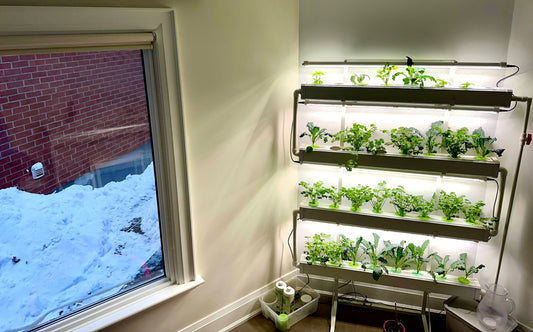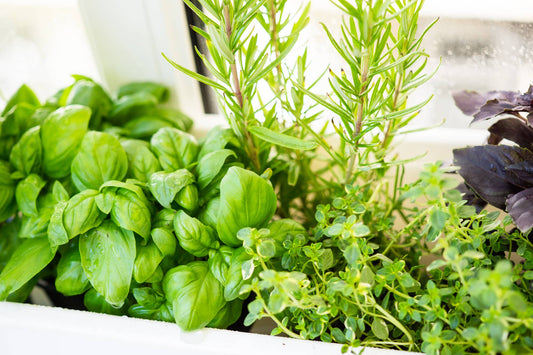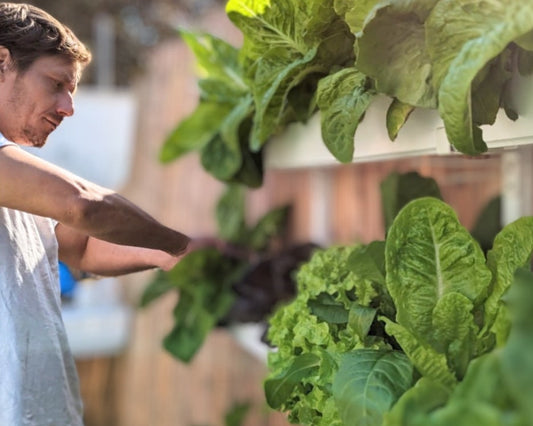In the world of hydroponic gardening, drip irrigation systems stand out for their efficiency and precision in delivering water and nutrients directly to plants' roots.
Bato bucket systems, in particular, have gained popularity among hydroponic enthusiasts for their simplicity and effectiveness.
However, one challenge that often arises with these systems is clogging.
Sediment, mineral buildup, organic matter, and algae can obstruct the flow, compromising plant health and growth.
This guide aims to equip hydroponic bato bucket growers with strategies for preventing and addressing drip system clogs, ensuring their plants thrive.
Let’s dive in.
Understanding the Causes
Clogging in drip irrigation can result from various factors:
- Sediment and Mineral Buildup: Tap water often contains minerals that can accumulate over time, narrowing the passage in drip lines and emitters.
- Organic Matter and Algae: Warm, nutrient-rich hydroponic systems provide an ideal environment for algae and organic matter to flourish, potentially blocking water flow.
Preventive Measures and Solutions
1. Regular System Flushing
Flush your system with clean water periodically to wash away any buildup. This practice is especially crucial before and after each growing cycle. Opening the end caps of your drip lines and allowing water to run through at high pressure can clear minor obstructions.
2. Filter Installation and Maintenance
Incorporating a filter into your hydroponic setup is crucial for trapping sediment before it enters your drip system. Regularly check and clean the filter to ensure it remains effective in preventing clogs.
3. Water Treatment
In areas with hard water, consider using water treatment solutions or installing a reverse osmosis system to reduce the mineral content in your water supply and minimize the risk of mineral buildup.
4. Proper System Design
Design your drip irrigation layout to include accessible points for cleaning and maintenance. Opt for quality, clog-resistant emitters to reduce the frequency of blockages.
5. Algae Control
Algae growth can be mitigated by managing light exposure to your nutrient solution and maintaining proper water temperatures. UV sterilizers and algaecides, safe for hydroponic use, can also be effective, but they should be used as a last resort due to their potential impact on beneficial microbes.
6. Routine Inspections
Regularly inspect your drip emitters and lines for signs of clogging. A proactive approach allows for early detection and resolution, preventing significant impact on your plants.
7. Embrace Clean Cultivation Practices
Keep your hydroponic environment clean. Remove plant debris and disinfect your system components between growing cycles to reduce organic matter that could contribute to clogs.


Dealing with Persistent Clogs
For systems already experiencing clogging, disassembling and manually cleaning the affected components may be necessary. Soaking drip lines and emitters in a vinegar solution can help dissolve mineral deposits.
For organic blockages, a diluted bleach solution (properly rinsed afterward to prevent plant damage) can clear out algae and organic debris. Always ensure that any chemicals used are thoroughly flushed from the system to avoid harming your plants.


Final Thoughts
Maintaining a clog-free drip irrigation system in your hydroponic bato bucket setup is critical to achieving optimal growth and yields.
By implementing these strategies, you can prevent common causes of clogging and maintain a steady flow of nutrients and water to your plants.
Remember, a little prevention goes a long way in ensuring the success of your hydroponic garden.
As always, if you have any questions or concerns, don’t hesitate to contact us! Our hydroponic experts are available to help you every step of the way.
Why Nature Tech?
- Our hydroponic systems save up to 90% more water than traditional growing methods.
- All hydroponic growing systems are designed for modern life with maximum yield, minimum effort, and endless beauty & joy.
- Our systems are made of food-safe plastics that don't contaminate the water with unhealthy compounds.
- Our compact and adaptable set-up can be used in large indoor spaces or a small balcony – wherever you choose, your plants will flourish.
- Our home-growing systems are easy to use - even for beginner gardeners!
- With our systems, your plants grow up to 3x faster than in soil, so you’ll save more time!
- We’re here to offer help every step of the way. If you need advice or have any doubts, feel free to reach out to us!




